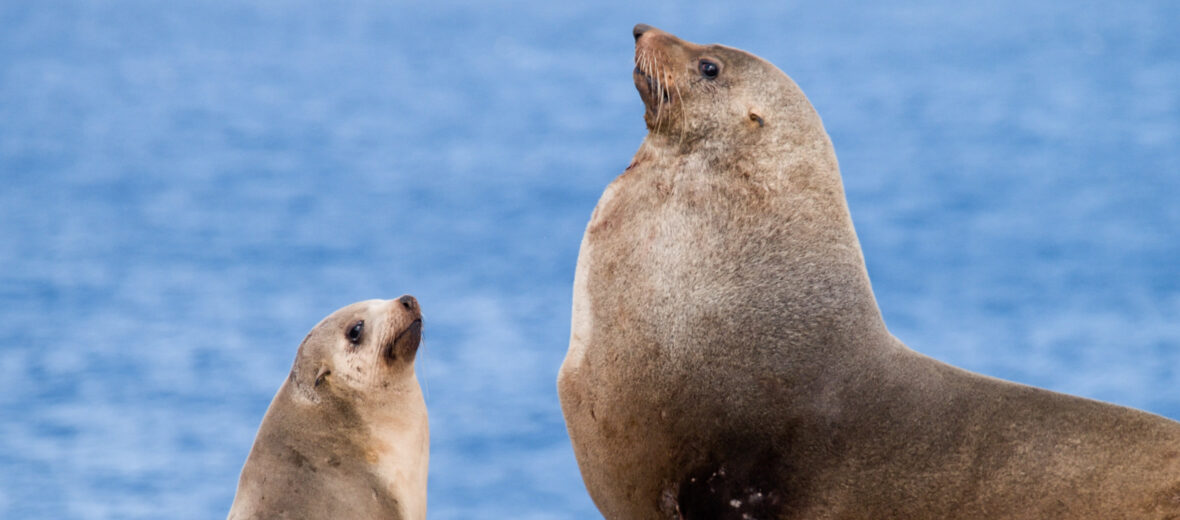
The Australian fur seal is a pinniped that lives in Australia, among other places, along the coastlines, on beaches, and rocky coves. Fur seals have large eyes, a pointed face with whiskers, and sharp teeth. The Australian Fur Seal is an agile swimmer and can dive to depths of 600 feet! Unfortunately, humans have caused a decline in their population due to over-fishing, abandoned fishing nets, and illegal hunting.
First the Stats…
Scientific name: Arctocephalus pusillus
Weight: Up to 280 lbs.
Length: Up to 6.2 feet
Lifespan: Up to 21 years
Now on to the Facts!
1.) These seals spend most of their time in the water. They can even sleep in the water. When sleeping in the water, they sleep on their backs, like otters.
2.) When on land they aren’t as acrobatic as they are in the ocean. They use their muscular front flippers to clumsily shuffle about.
3.) They are sexually dimorphic (males and females look noticeably different) as males are nearly 5 times larger than females.
4.) The fur seal has excellent eyesight and sense of smell.
5.) Fur seals use their whiskers, in part, to detect prey in the dark cold ocean waters.
But wait, there’s more on the fur seal!
6.) The primary predators of the fur seal are sea lions, orcas, and sharks.
7.) You can see them gathered in mass on beaches and rocky shores during mating season.
Did you know…?
Males can have harems of up to 40 females. That’s a lot of girlfriends!
8.) During mating season males will not eat and can lose up to 20% of their body mass!
9.) Carnivorous (eats only meat), these critters consume fish, such as herring, mackerel, anchovies, and salmon. Plus they eat squid, krill, and even sea birds.
10.) Pregnancy lasts 11 – 12 months and produces 1 pup.
Now a Short Fur Seal Video!
Also, check out the Critter Science YouTube channel. Videos added frequently!
Want to suggest a critter for me to write about? Let me know here.



